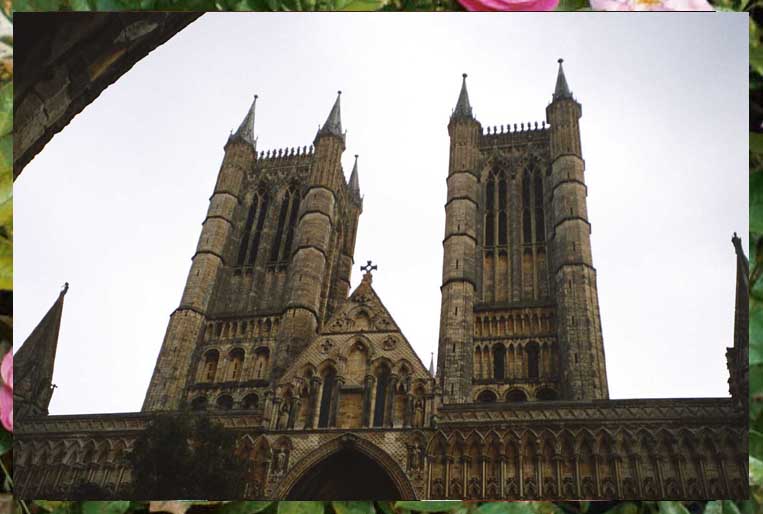 Lincoln is the county town of Lincolnshire, the county which forms the Eastern part of
central England. Although now it is all too often passed by, in the Middle Ages it was a
prosperous trading centre with strong links to Denmark in particular. Which is why the
City could afford to build such a big cathedral! The oldest part still visible was built
in 1250. It stands on a hill in the City centre, and dominates the surrounding
countryside. |

Stained glass is a particular English
talent. Some of the stained glass windows in English churches, and particularly
cathedrals, is quite magnificent. The quality of artwork, the intricacy of the detail and
the love which went into producing such an exquisite work are all breathtaking.
|

The West front of Lincoln cathedral
has been described (by the Lincoln Cathedral authorities) as `probably the finest Gothic
facade in Europe'. However stiff the competition, it is certainly very imposing. The round
arches at the base of each tower are from the original foundation built in Norman times;
the bulk of this early building was destroyed by an earthquake in 1185. |